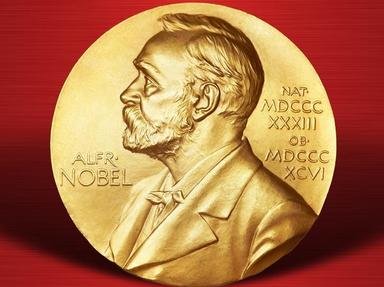Quiz Answer Key and Fun Facts
1. In 1991 the Peace Prize was given to this woman "for her non-violent struggle for democracy and human rights". So which citizen, of the country formerly called Burma, won this award?
2. This winner of the Nobel Peace Prize was a well-known Soviet nuclear physicist, dissident and human rights activist. He is a founder member of the "Moscow Human Rights Committee" in 1970, which brought him more to the attention of the Soviet government. So which Soviet dissident was nominated for the award in 1973 before receiving it two years later?
3. The winner in 1929 was an American lawyer, statesman and Secretary of State during the early years of the 20th century. He received the Peace Prize in recognition of a famous pact that provided for "the renunciation of war as an instrument of national policy". Which former senator for Minnesota was honoured by the Nobel Peace Prize Committee?
4. In 1960 this teacher and politician received the Nobel Peace Prize for his role in the non-violent struggle against apartheid in South Africa. Which black activist, whose Zulu name was Mvumbi, was awarded the Nobel Peace Prize?
5. The Nansen passport was established by the Nansen International Office for Refugees on behalf of the League of Nations in recognition of the plight of thousands of stateless people. These passports were honoured by the governments of 52 countries. In which year did this precursor of the Office of the High Commissioner for Refugees receive the Nobel Peace Prize?
6. From my neck of the woods come two very brave women, Mairead Corrigan and Betty Williams, who received the Nobel Peace Prize in 1976. What was the organisation that these two women created in the middle of "The Troubles" in Northern Ireland?
7. Which American President was the recipient of the Nobel Prize for Peace in 2002, "for his decades of untiring effort to find peaceful solutions to international conflicts, to advance democracy and human rights, and to promote economic and social development"?
8. Born Countess Kinsky in Prague Baroness Bertha Von Suttner was awarded the Noble Peace Prize in 1905, becoming the first woman to receive this award. Many believe it was Von Suttner who asked her former employer to create a Peace Prize. Who was her illustrious employer?
9. In 1901 the very first Peace Prize award was given to the founder of the International Committee of the Red Cross Henri Dunant, together with the French economist Frederic Passey. It was Henri's memories and experiences of which particular battle that inspired the creation of the International Red Cross?
10. This son of a 19th century British Prime Minister won the Nobel Peace Prize award for being one of the main architects of the League of Nations. He received the award in 1937 shortly before the outbreak of the Second World War, which signalled the end of his creation. Which proponent of Esperanto is the recipient of the 1937 Nobel Peace Prize?
Source: Author
martinjudo
This quiz was reviewed by FunTrivia editor
Snowman before going online.
Any errors found in FunTrivia content are routinely corrected through our feedback system.


